Fei Han
Omni-LIVO: Robust RGB-Colored Multi-Camera Visual-Inertial-LiDAR Odometry via Photometric Migration and ESIKF Fusion
Sep 19, 2025



Abstract:Wide field-of-view (FoV) LiDAR sensors provide dense geometry across large environments, but most existing LiDAR-inertial-visual odometry (LIVO) systems rely on a single camera, leading to limited spatial coverage and degraded robustness. We present Omni-LIVO, the first tightly coupled multi-camera LIVO system that bridges the FoV mismatch between wide-angle LiDAR and conventional cameras. Omni-LIVO introduces a Cross-View direct tracking strategy that maintains photometric consistency across non-overlapping views, and extends the Error-State Iterated Kalman Filter (ESIKF) with multi-view updates and adaptive covariance weighting. The system is evaluated on public benchmarks and our custom dataset, showing improved accuracy and robustness over state-of-the-art LIVO, LIO, and visual-inertial baselines. Code and dataset will be released upon publication.
Learn to Swim: Data-Driven LSTM Hydrodynamic Model for Quadruped Robot Gait Optimization
May 06, 2025Abstract:This paper presents a Long Short-Term Memory network-based Fluid Experiment Data-Driven model (FED-LSTM) for predicting unsteady, nonlinear hydrodynamic forces on the underwater quadruped robot we constructed. Trained on experimental data from leg force and body drag tests conducted in both a recirculating water tank and a towing tank, FED-LSTM outperforms traditional Empirical Formulas (EF) commonly used for flow prediction over flat surfaces. The model demonstrates superior accuracy and adaptability in capturing complex fluid dynamics, particularly in straight-line and turning-gait optimizations via the NSGA-II algorithm. FED-LSTM reduces deflection errors during straight-line swimming and improves turn times without increasing the turning radius. Hardware experiments further validate the model's precision and stability over EF. This approach provides a robust framework for enhancing the swimming performance of legged robots, laying the groundwork for future advances in underwater robotic locomotion.
Molecular topological deep learning for polymer property prediction
Oct 07, 2024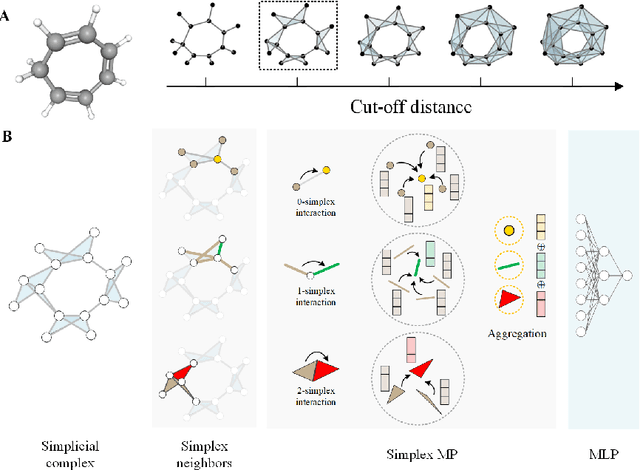
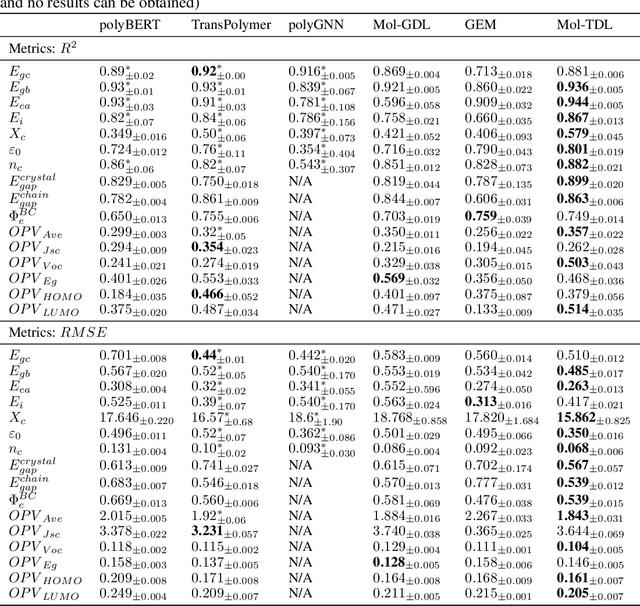
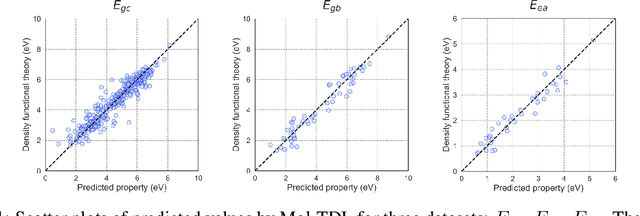
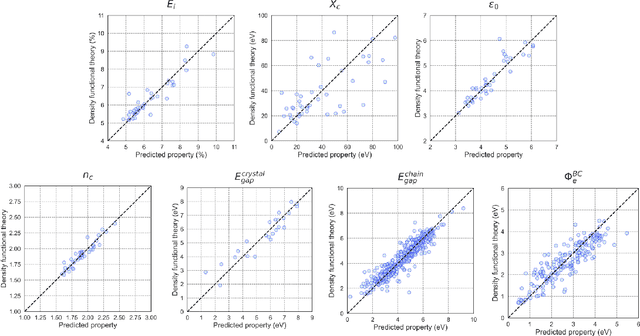
Abstract:Accurate and efficient prediction of polymer properties is of key importance for polymer design. Traditional experimental tools and density function theory (DFT)-based simulations for polymer property evaluation, are both expensive and time-consuming. Recently, a gigantic amount of graph-based molecular models have emerged and demonstrated huge potential in molecular data analysis. Even with the great progresses, these models tend to ignore the high-order and mutliscale information within the data. In this paper, we develop molecular topological deep learning (Mol-TDL) for polymer property analysis. Our Mol-TDL incorporates both high-order interactions and multiscale properties into topological deep learning architecture. The key idea is to represent polymer molecules as a series of simplicial complices at different scales and build up simplical neural networks accordingly. The aggregated information from different scales provides a more accurate prediction of polymer molecular properties.
Learning Adaptive Hydrodynamic Models Using Neural ODEs in Complex Conditions
Oct 01, 2024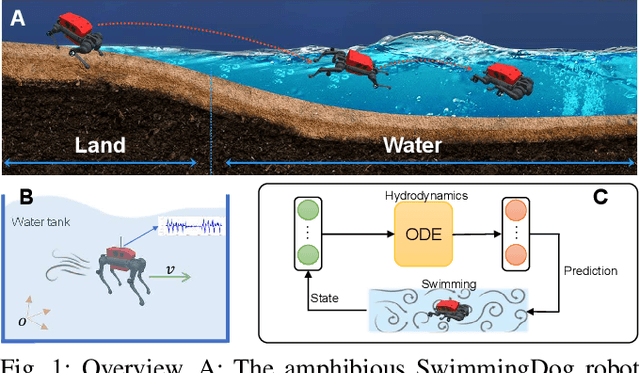
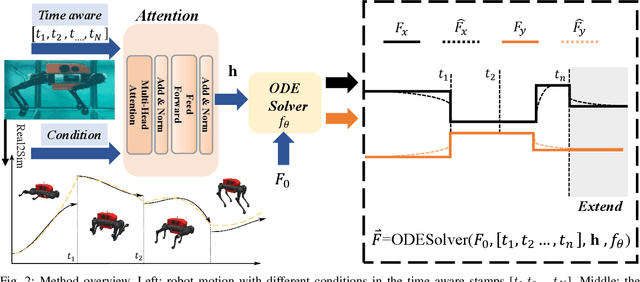
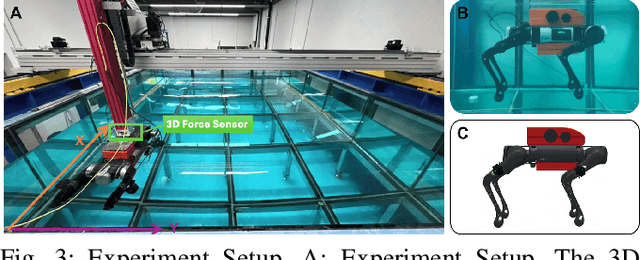
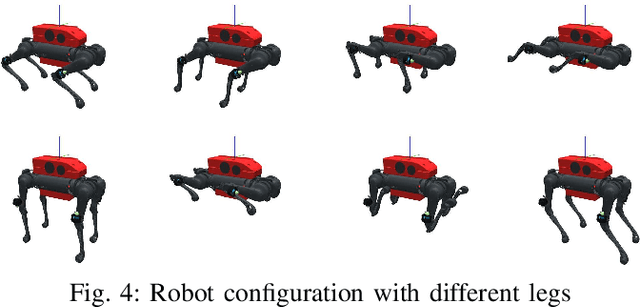
Abstract:Reinforcement learning-based quadruped robots excel across various terrains but still lack the ability to swim in water due to the complex underwater environment. This paper presents the development and evaluation of a data-driven hydrodynamic model for amphibious quadruped robots, aiming to enhance their adaptive capabilities in complex and dynamic underwater environments. The proposed model leverages Neural Ordinary Differential Equations (ODEs) combined with attention mechanisms to accurately process and interpret real-time sensor data. The model enables the quadruped robots to understand and predict complex environmental patterns, facilitating robust decision-making strategies. We harness real-time sensor data, capturing various environmental and internal state parameters to train and evaluate our model. A significant focus of our evaluation involves testing the quadruped robot's performance across different hydrodynamic conditions and assessing its capabilities at varying speeds and fluid dynamic conditions. The outcomes suggest that the model can effectively learn and adapt to varying conditions, enabling the prediction of force states and enhancing autonomous robotic behaviors in various practical scenarios.
Range Resolution Enhanced Method with Spectral Properties for Hyperspectral Lidar
Mar 03, 2023Abstract:Waveform decomposition is needed as a first step in the extraction of various types of geometric and spectral information from hyperspectral full-waveform LiDAR echoes. We present a new approach to deal with the "Pseudo-monopulse" waveform formed by the overlapped waveforms from multi-targets when they are very close. We use one single skew-normal distribution (SND) model to fit waveforms of all spectral channels first and count the geometric center position distribution of the echoes to decide whether it contains multi-targets. The geometric center position distribution of the "Pseudo-monopulse" presents aggregation and asymmetry with the change of wavelength, while such an asymmetric phenomenon cannot be found from the echoes of the single target. Both theoretical and experimental data verify the point. Based on such observation, we further propose a hyperspectral waveform decomposition method utilizing the SND mixture model with: 1) initializing new waveform component parameters and their ranges based on the distinction of the three characteristics (geometric center position, pulse width, and skew-coefficient) between the echo and fitted SND waveform and 2) conducting single-channel waveform decomposition for all channels and 3) setting thresholds to find outlier channels based on statistical parameters of all single-channel decomposition results (the standard deviation and the means of geometric center position) and 4) re-conducting single-channel waveform decomposition for these outlier channels. The proposed method significantly improves the range resolution from 60cm to 5cm at most for a 4ns width laser pulse and represents the state-of-the-art in "Pseudo-monopulse" waveform decomposition.
Multisensory Omni-directional Long-term Place Recognition: Benchmark Dataset and Analysis
Apr 18, 2017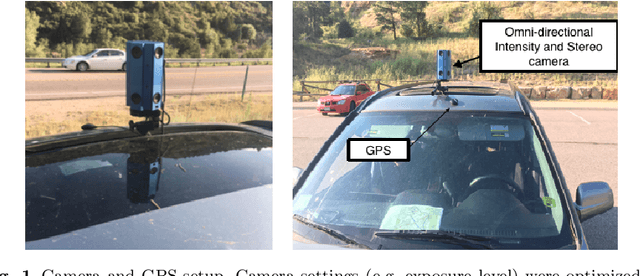
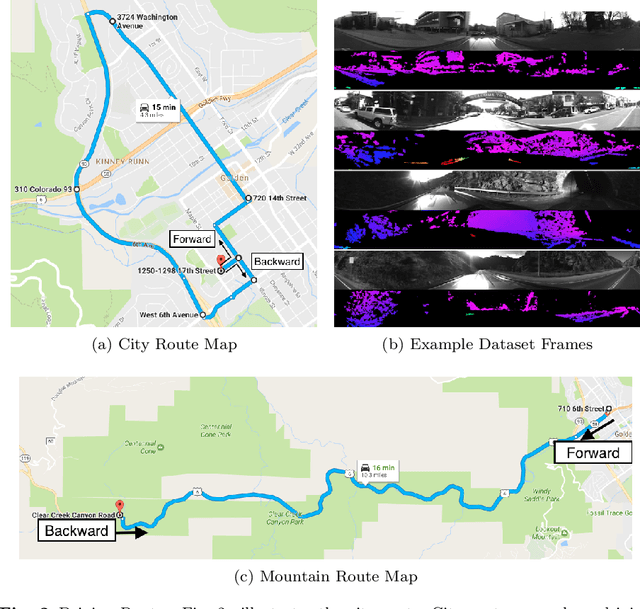
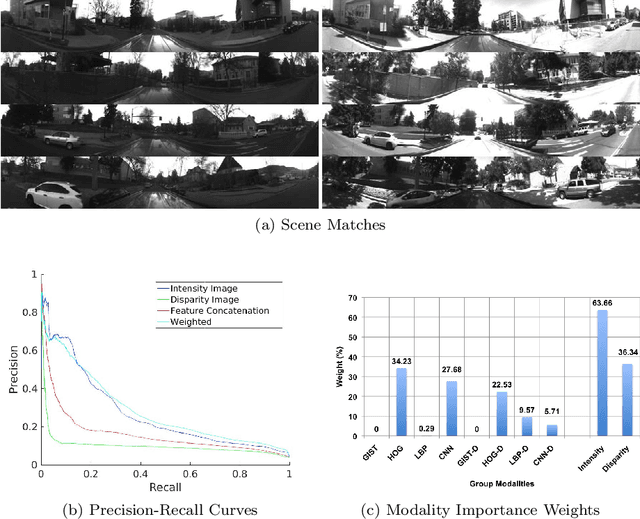
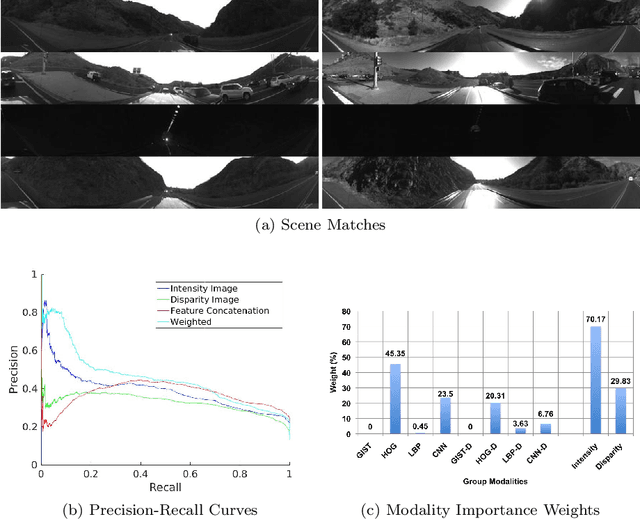
Abstract:Recognizing a previously visited place, also known as place recognition (or loop closure detection) is the key towards fully autonomous mobile robots and self-driving vehicle navigation. Augmented with various Simultaneous Localization and Mapping techniques (SLAM), loop closure detection allows for incremental pose correction and can bolster efficient and accurate map creation. However, repeated and similar scenes (perceptual aliasing) and long term appearance changes (e.g. weather variations) are major challenges for current place recognition algorithms. We introduce a new dataset Multisensory Omnidirectional Long-term Place recognition (MOLP) comprising omnidirectional intensity and disparity images. This dataset presents many of the challenges faced by outdoor mobile robots and current place recognition algorithms. Using MOLP dataset, we formulate the place recognition problem as a regularized sparse convex optimization problem. We conclude that information extracted from intensity image is superior to disparity image in isolating discriminative features for successful long term place recognition. Furthermore, when these discriminative features are extracted from an omnidirectional vision sensor, a robust bidirectional loop closure detection approach is established, allowing mobile robots to close the loop, regardless of the difference in the direction when revisiting a place.
Sequence-based Multimodal Apprenticeship Learning For Robot Perception and Decision Making
Feb 24, 2017



Abstract:Apprenticeship learning has recently attracted a wide attention due to its capability of allowing robots to learn physical tasks directly from demonstrations provided by human experts. Most previous techniques assumed that the state space is known a priori or employed simple state representations that usually suffer from perceptual aliasing. Different from previous research, we propose a novel approach named Sequence-based Multimodal Apprenticeship Learning (SMAL), which is capable to simultaneously fusing temporal information and multimodal data, and to integrate robot perception with decision making. To evaluate the SMAL approach, experiments are performed using both simulations and real-world robots in the challenging search and rescue scenarios. The empirical study has validated that our SMAL approach can effectively learn plans for robots to make decisions using sequence of multimodal observations. Experimental results have also showed that SMAL outperforms the baseline methods using individual images.
Simultaneous Feature and Body-Part Learning for Real-Time Robot Awareness of Human Behaviors
Feb 24, 2017



Abstract:Robot awareness of human actions is an essential research problem in robotics with many important real-world applications, including human-robot collaboration and teaming. Over the past few years, depth sensors have become a standard device widely used by intelligent robots for 3D perception, which can also offer human skeletal data in 3D space. Several methods based on skeletal data were designed to enable robot awareness of human actions with satisfactory accuracy. However, previous methods treated all body parts and features equally important, without the capability to identify discriminative body parts and features. In this paper, we propose a novel simultaneous Feature And Body-part Learning (FABL) approach that simultaneously identifies discriminative body parts and features, and efficiently integrates all available information together to enable real-time robot awareness of human behaviors. We formulate FABL as a regression-like optimization problem with structured sparsity-inducing norms to model interrelationships of body parts and features. We also develop an optimization algorithm to solve the formulated problem, which possesses a theoretical guarantee to find the optimal solution. To evaluate FABL, three experiments were performed using public benchmark datasets, including the MSR Action3D and CAD-60 datasets, as well as a Baxter robot in practical assistive living applications. Experimental results show that our FABL approach obtains a high recognition accuracy with a processing speed of the order-of-magnitude of 10e4 Hz, which makes FABL a promising method to enable real-time robot awareness of human behaviors in practical robotics applications.
Space-Time Representation of People Based on 3D Skeletal Data: A Review
Feb 04, 2017
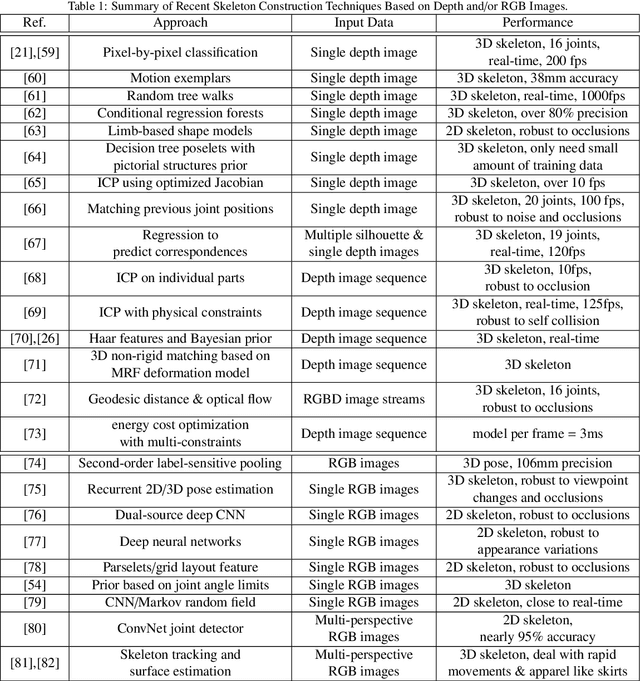


Abstract:Spatiotemporal human representation based on 3D visual perception data is a rapidly growing research area. Based on the information sources, these representations can be broadly categorized into two groups based on RGB-D information or 3D skeleton data. Recently, skeleton-based human representations have been intensively studied and kept attracting an increasing attention, due to their robustness to variations of viewpoint, human body scale and motion speed as well as the realtime, online performance. This paper presents a comprehensive survey of existing space-time representations of people based on 3D skeletal data, and provides an informative categorization and analysis of these methods from the perspectives, including information modality, representation encoding, structure and transition, and feature engineering. We also provide a brief overview of skeleton acquisition devices and construction methods, enlist a number of public benchmark datasets with skeleton data, and discuss potential future research directions.
Self-Reflective Risk-Aware Artificial Cognitive Modeling for Robot Response to Human Behaviors
May 16, 2016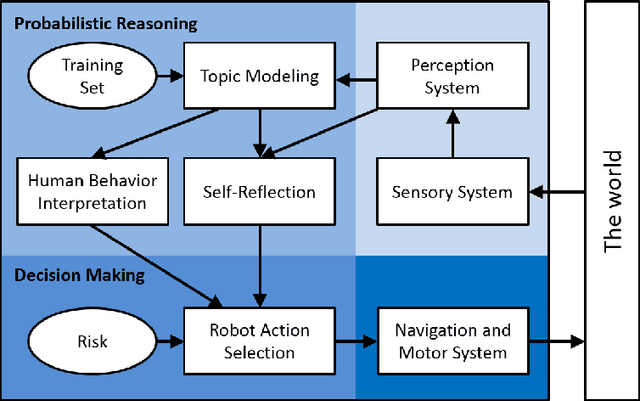
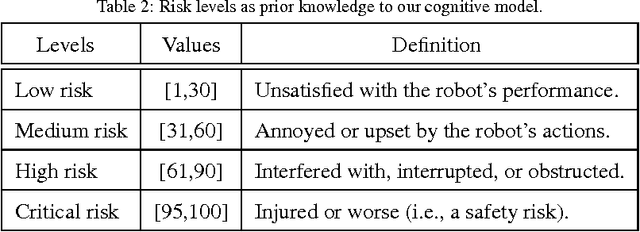
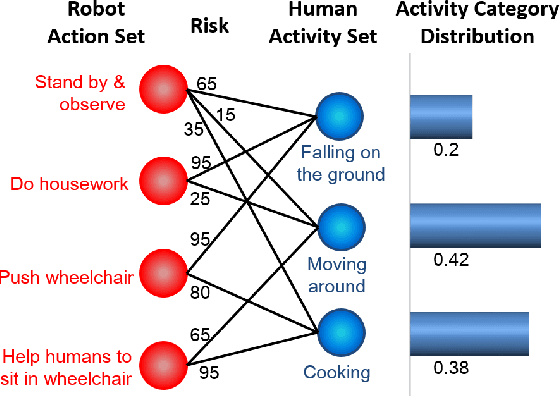

Abstract:In order for cooperative robots ("co-robots") to respond to human behaviors accurately and efficiently in human-robot collaboration, interpretation of human actions, awareness of new situations, and appropriate decision making are all crucial abilities for co-robots. For this purpose, the human behaviors should be interpreted by co-robots in the same manner as human peers. To address this issue, a novel interpretability indicator is introduced so that robot actions are appropriate to the current human behaviors. In addition, the complete consideration of all potential situations of a robot's environment is nearly impossible in real-world applications, making it difficult for the co-robot to act appropriately and safely in new scenarios. This is true even when the pretrained model is highly accurate in a known situation. For effective and safe teaming with humans, we introduce a new generalizability indicator that allows a co-robot to self-reflect and reason about when an observation falls outside the co-robot's learned model. Based on topic modeling and two novel indicators, we propose a new Self-reflective Risk-aware Artificial Cognitive (SRAC) model. The co-robots are able to consider action risks and identify new situations so that better decisions can be made. Experiments both using real-world datasets and on physical robots suggest that our SRAC model significantly outperforms the traditional methodology and enables better decision making in response to human activities.
 Add to Chrome
Add to Chrome Add to Firefox
Add to Firefox Add to Edge
Add to Edge